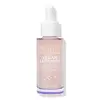What's inside
What's inside
 Key Ingredients
Key Ingredients

 Benefits
Benefits

 Concerns
Concerns

 Ingredients Side-by-side
Ingredients Side-by-side

Water
Skin ConditioningGlyceryl Stearate
EmollientButylene Glycol
HumectantErythritol
HumectantFructooligosaccharides
HumectantAvena Sativa Kernel Extract
AbrasiveCeramide NP
Skin ConditioningCeramide Ns
Skin ConditioningCeramide Ng
Skin ConditioningCeramide As
Skin ConditioningCeramide EOP
Skin ConditioningCeramide AP
Skin ConditioningTocopherol
AntioxidantSodium Hyaluronate
HumectantGlycerin
HumectantC14-22 Alcohols
Emulsion StabilisingPEG-100 Stearate
Sodium Polyacryloyldimethyl Taurate
Emulsion StabilisingCaprylyl Methicone
Skin ConditioningSodium Benzoate
MaskingC12-20 Alkyl Glucoside
EmulsifyingC30-45 Alkyl Cetearyl Dimethicone Crosspolymer
EmollientIsohexadecane
EmollientPEG-7 Glyceryl Cocoate
EmulsifyingPhenoxyethanol
Preservative1,2-Hexanediol
Skin ConditioningHydrogenated Lecithin
EmulsifyingPropylene Glycol
HumectantCastor Oil Hydrogenated Ethoxylated
PerfumingEthylhexylglycerin
Skin ConditioningWater, Glyceryl Stearate, Butylene Glycol, Erythritol, Fructooligosaccharides, Avena Sativa Kernel Extract, Ceramide NP, Ceramide Ns, Ceramide Ng, Ceramide As, Ceramide EOP, Ceramide AP, Tocopherol, Sodium Hyaluronate, Glycerin, C14-22 Alcohols, PEG-100 Stearate, Sodium Polyacryloyldimethyl Taurate, Caprylyl Methicone, Sodium Benzoate, C12-20 Alkyl Glucoside, C30-45 Alkyl Cetearyl Dimethicone Crosspolymer, Isohexadecane, PEG-7 Glyceryl Cocoate, Phenoxyethanol, 1,2-Hexanediol, Hydrogenated Lecithin, Propylene Glycol, Castor Oil Hydrogenated Ethoxylated, Ethylhexylglycerin
Carthamus Tinctorius Seed Oil
MaskingCaprylic/Capric Triglyceride
MaskingHelianthus Annuus Seed Oil
EmollientSimmondsia Chinensis Seed Oil
EmollientAvena Sativa Kernel Oil
Skin ConditioningSorbitan Oleate
EmulsifyingCeramide NP
Skin ConditioningCeramide AP
Skin ConditioningCeramide EOP
Skin ConditioningAlthaea Officinalis Leaf/Root Extract
EmollientCalendula Officinalis Flower Extract
MaskingRosmarinus Officinalis Leaf Extract
AntimicrobialPhytosphingosine
Skin ConditioningLinoleic Acid
CleansingPhytosterols
Skin ConditioningPhospholipids
Skin ConditioningSodium Lauroyl Lactylate
EmulsifyingCholesterol
EmollientCarbomer
Emulsion StabilisingXanthan Gum
EmulsifyingPropanediol
SolventPhenoxyethanol
PreservativeEthylhexylglycerin
Skin ConditioningCarthamus Tinctorius Seed Oil, Caprylic/Capric Triglyceride, Helianthus Annuus Seed Oil, Simmondsia Chinensis Seed Oil, Avena Sativa Kernel Oil, Sorbitan Oleate, Ceramide NP, Ceramide AP, Ceramide EOP, Althaea Officinalis Leaf/Root Extract, Calendula Officinalis Flower Extract, Rosmarinus Officinalis Leaf Extract, Phytosphingosine, Linoleic Acid, Phytosterols, Phospholipids, Sodium Lauroyl Lactylate, Cholesterol, Carbomer, Xanthan Gum, Propanediol, Phenoxyethanol, Ethylhexylglycerin
Ingredients Explained
These ingredients are found in both products.
Ingredients higher up in an ingredient list are typically present in a larger amount.
Ceramide AP is formally known as Ceramide 6.
Ceramides are intercellular lipids naturally found in our skin that bonds dead skin cells together to create a barrier. Having a strong skin barrier leads to more firm and hydrated skin.
They are known for their ability to hold water and thus are a great ingredient for dry skin. By bolstering the skin ceramides act as a barrier against irritating ingredients. This can help with inflammation as well.
If you would like to eat ceramides, sweet potatoes contain a small amount.
Read more about other common types of ceramides here:
Ceramide NP
Ceramide EOP
Ceramide EOP is formally known as Ceramide 1 and Ceramide 1 A.
EOP stands for a linked Ester fatty acid, a linked Omega hydroxy fatty acid, and the Phytosphingosine base.
Ceramides are intercellular lipids naturally found in our skin. They bind dead skin cells together to create a barrier. The ceramides in our skin have the ability to hold water to keep our skin hydrated.
Ceramides are an important building block for our skin barrier. A strong skin barrier helps with:
If you would like to eat ceramides, sweet potatoes contain a small amount.
Read more about other common types of ceramides here:
Learn more about Ceramide EOPCeramide NP is a type of ceramide and formally known as ceramide 3.
Ceramides are intercellular lipids naturally found in our skin that bonds dead skin cells together to create a barrier. They are known for their ability to hold water and thus are a great ingredient for dry skin.
Ceramides are an important building block for our skin barrier. A stronger barrier helps the skin look more firm and hydrated. By bolstering the skin ceramides act as a barrier against irritating ingredients. This can help with inflammation as well.
If you would like to eat ceramides, sweet potatoes contain a small amount.
Read more about other common types of ceramides here:
Ceramide AP
Ceramide EOP
Ethylhexylglycerin (we can't pronounce this either) is commonly used as a preservative and skin softener. It is derived from glyceryl.
You might see Ethylhexylglycerin often paired with other preservatives such as phenoxyethanol. Ethylhexylglycerin has been found to increase the effectiveness of these other preservatives.
Phenoxyethanol is a preservative that has germicide, antimicrobial, and aromatic properties. Studies show that phenoxyethanol can prevent microbial growth. By itself, it has a scent that is similar to that of a rose.
It's often used in formulations along with Caprylyl Glycol to preserve the shelf life of products.